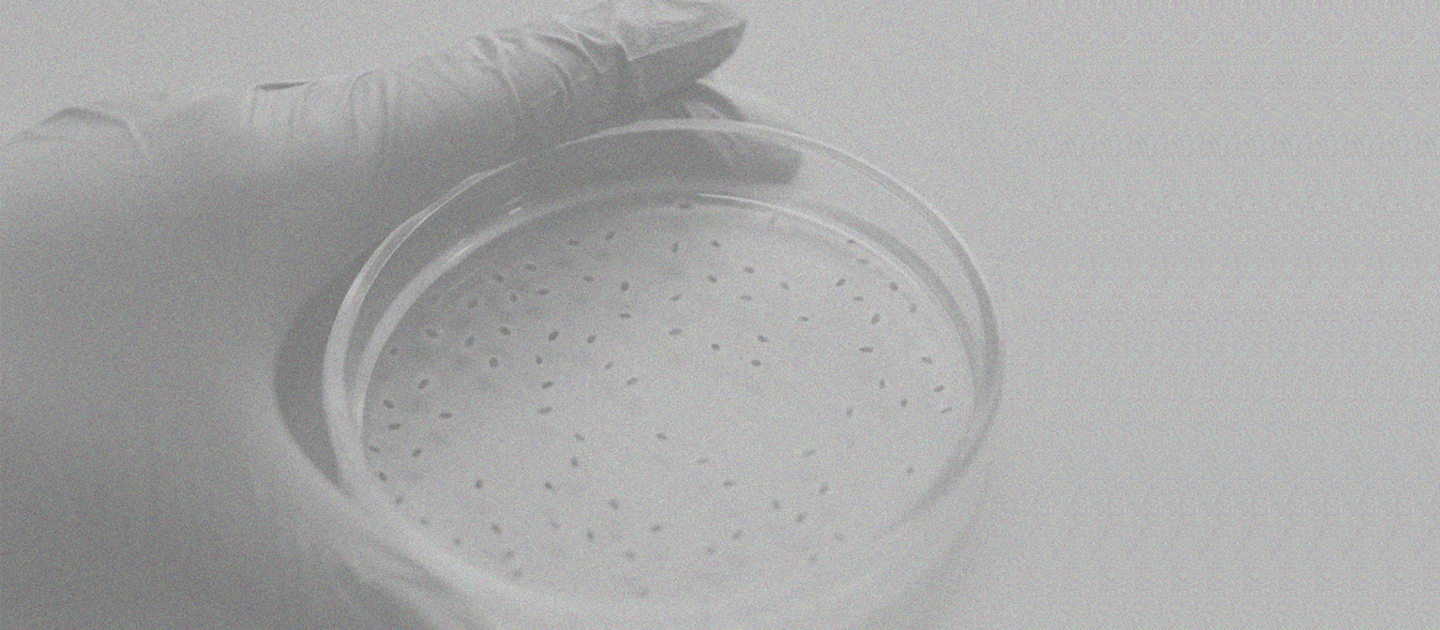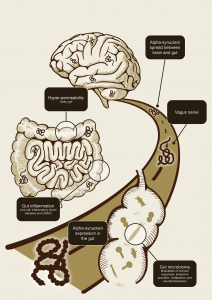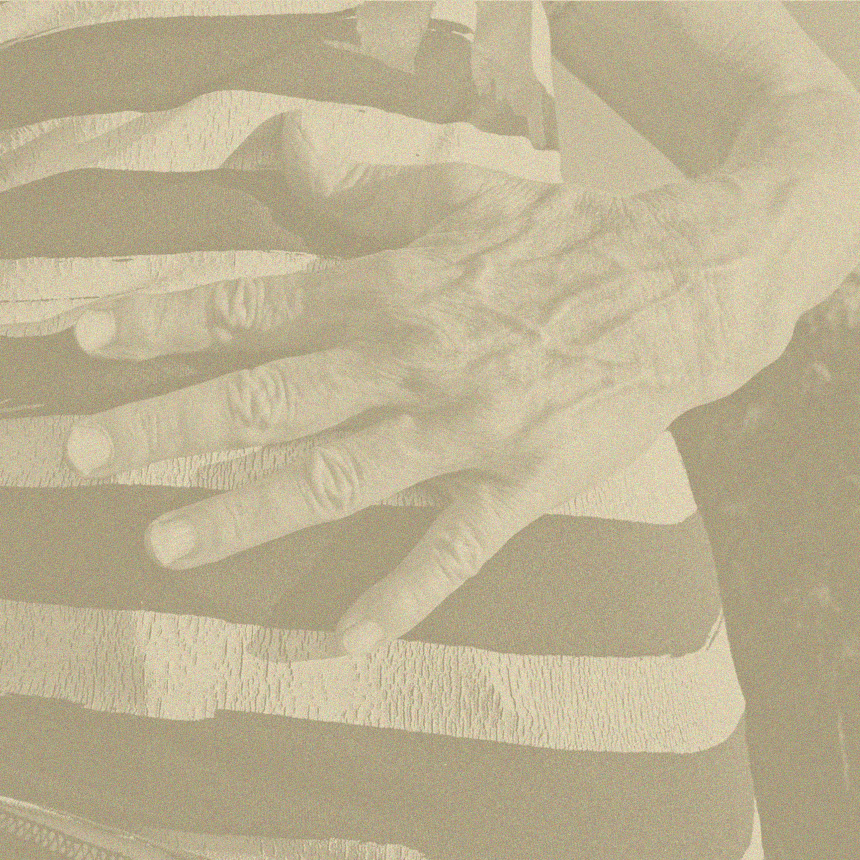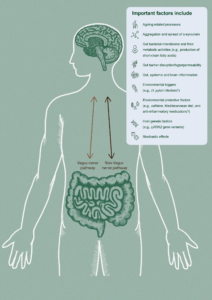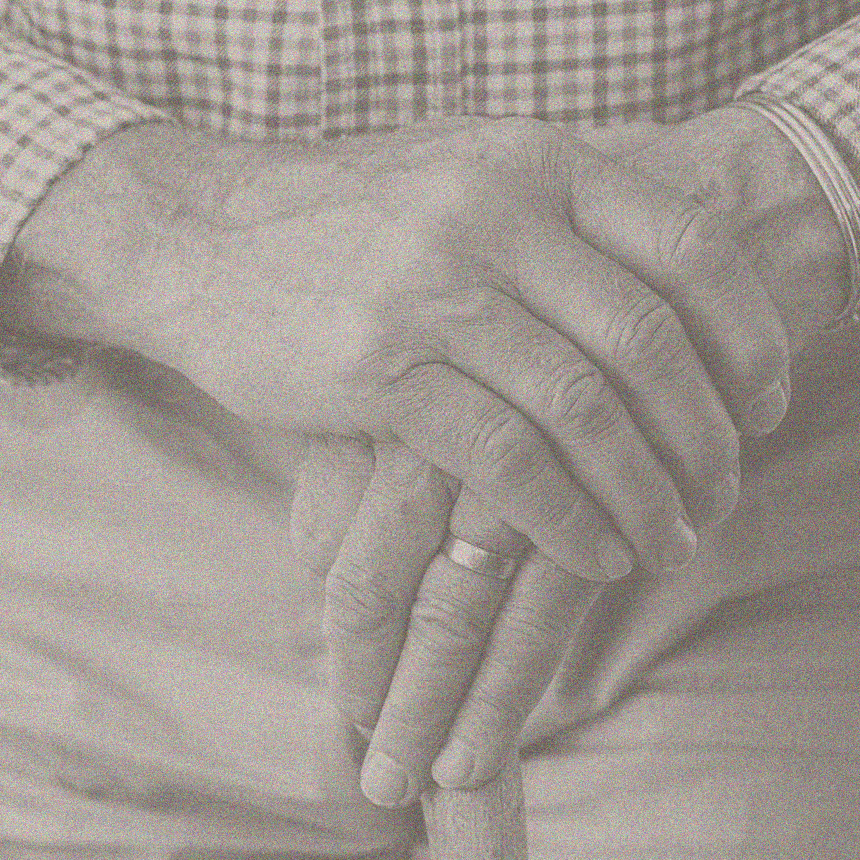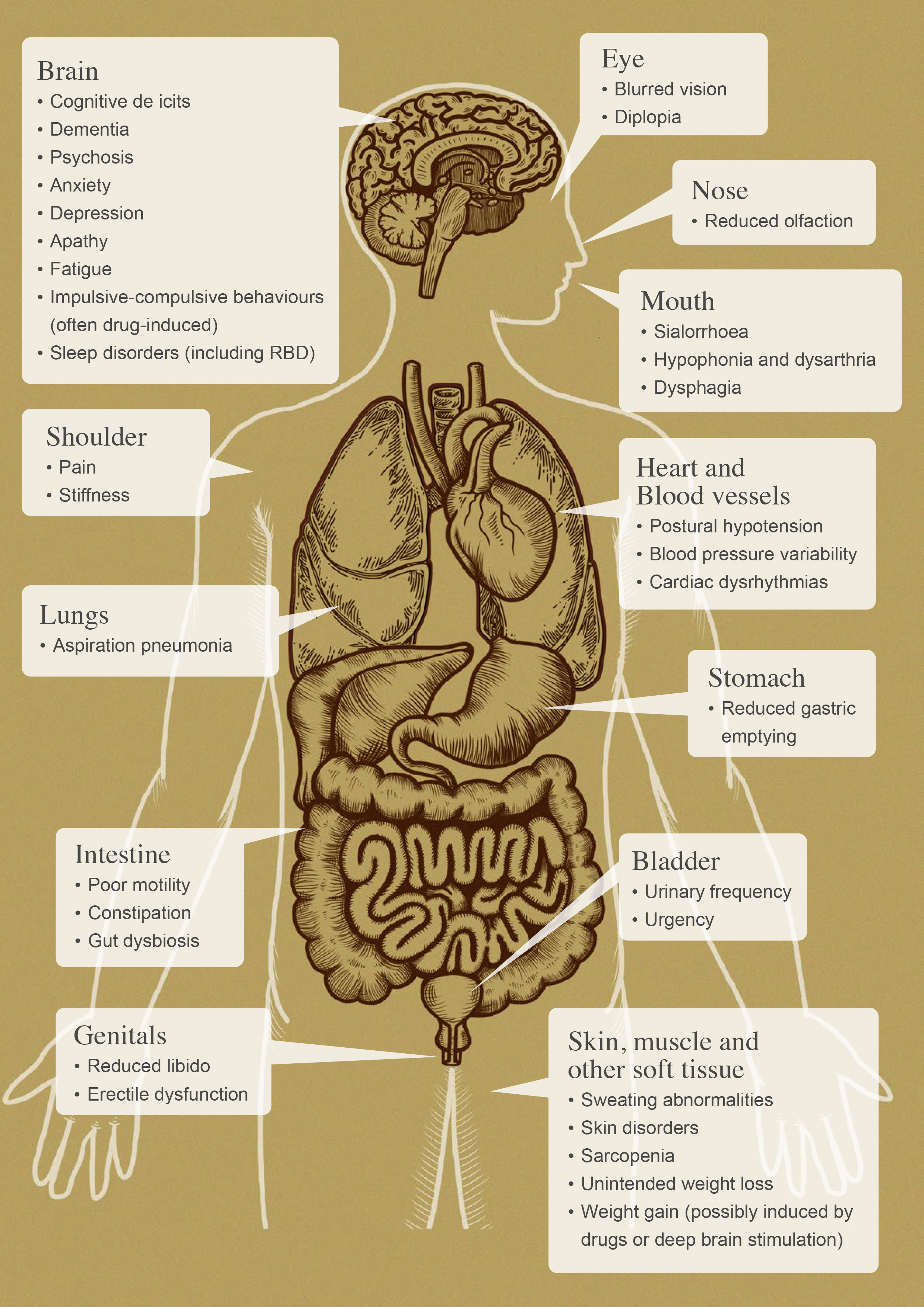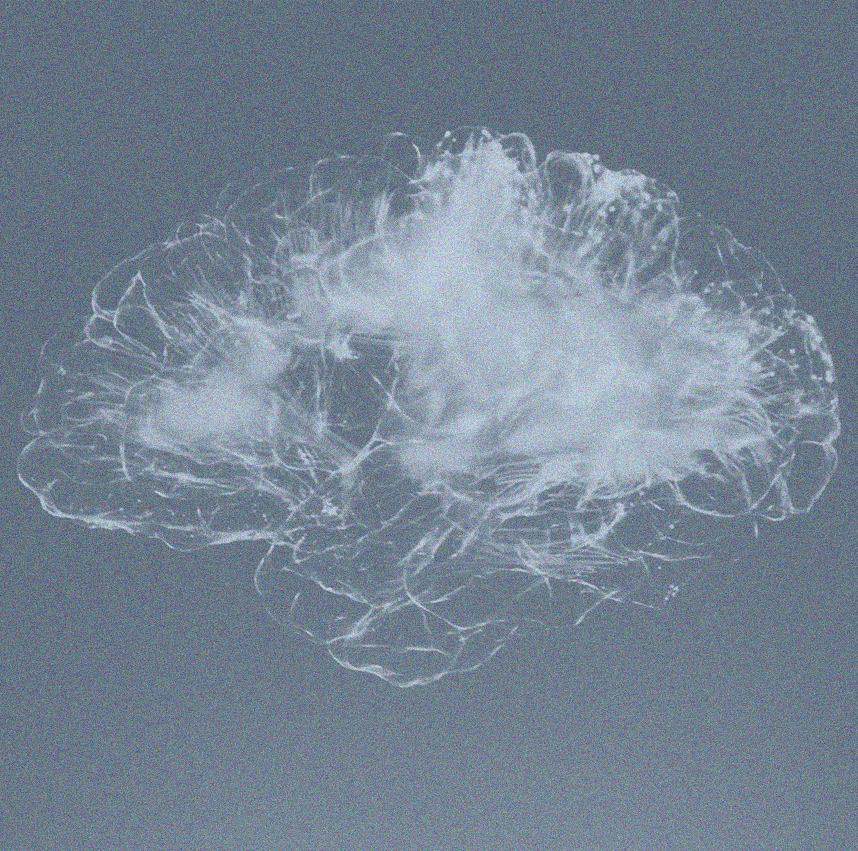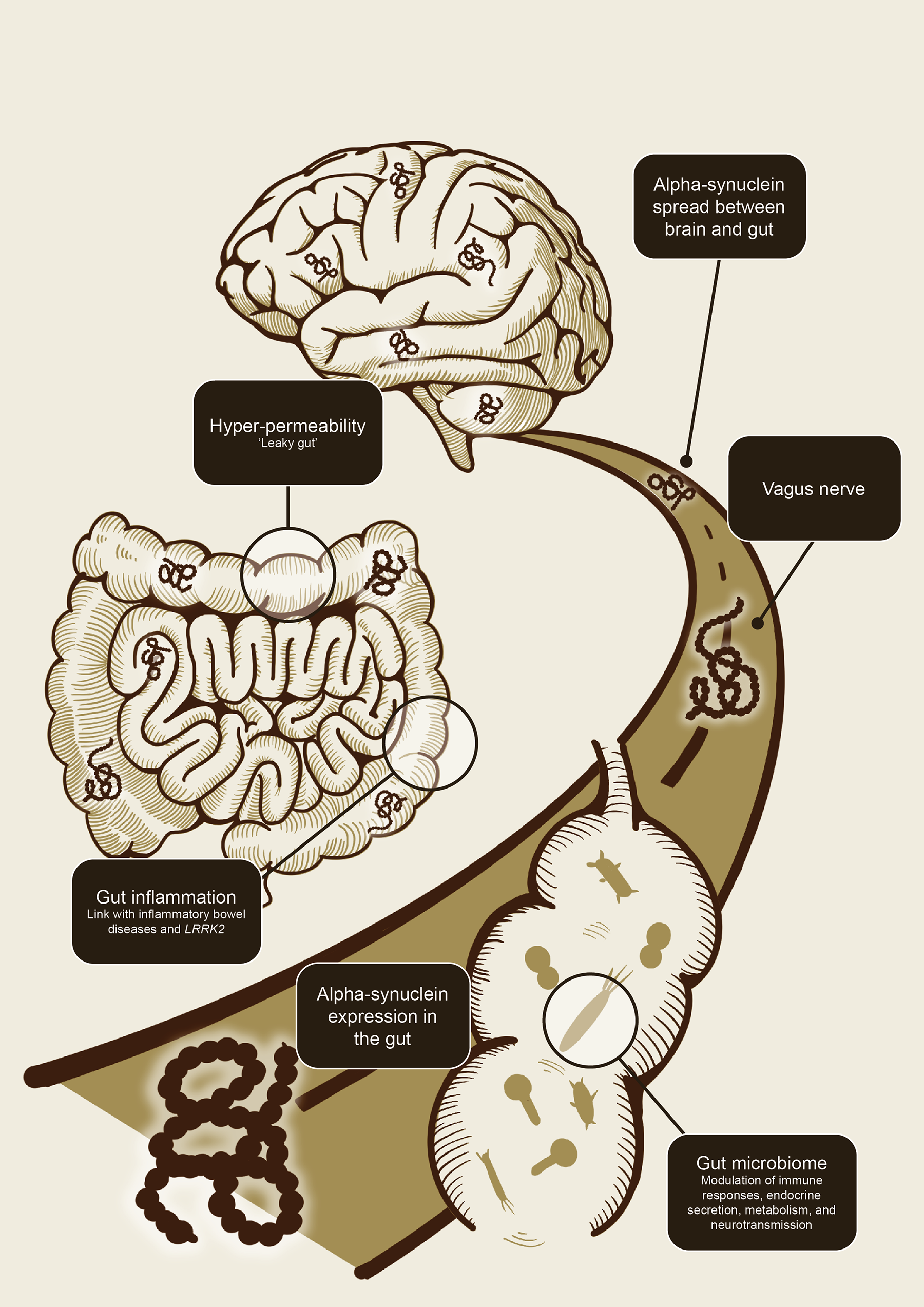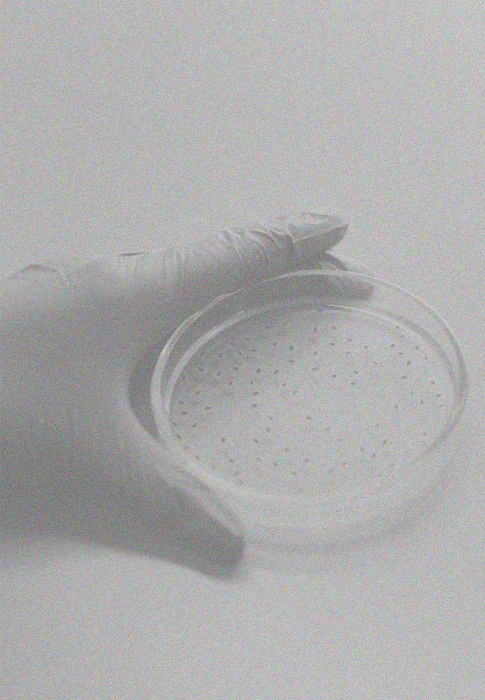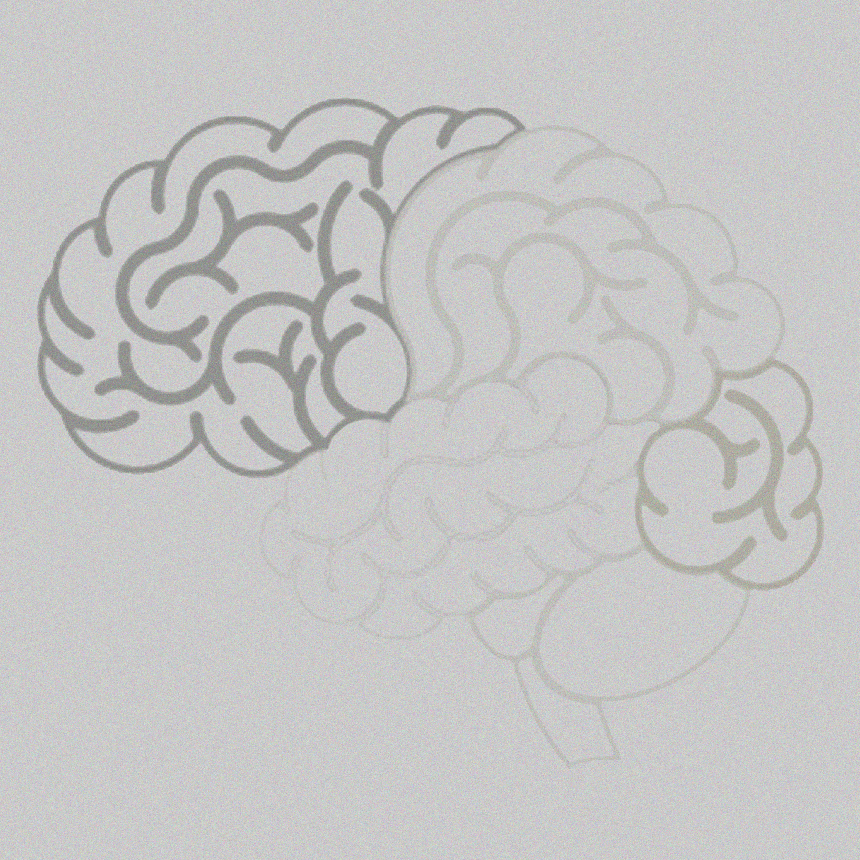Microbiome and Parkinson’s disease
The explosion of knowledge of the gut microbiome, occasioned by the developing high throughput measurement of the genetic signatures of the myriad of different gut bacteria, may be the most significant advance in human biology since the cracking of the genetic code. As well as offering remarkable new treatments for severe gut disorders such as pseudomembranous colitis, microbiome research now lays claim to causation and treatment of Parkinson’s disease (PD).
This series explores what is known around the microbiome and PD, and areas of research in need of furthering our future understanding of how the gut impacts health within these and other brain diseases.
Evidence has been accumulating over the past years for a bidirectional relationship between the brain and the gut that plays an important role in Parkinson’s disease (PD).
Schematic illustration of how the gut-brain axis may contribute to the spread of alpha-synuclein pathology (adapted from Breen et al 2019).
It is now well recognised that gastrointestinal symptoms, particularly constipation, are amongst the most prominent and troublesome early manifestations of PD.
Parkinson’s disease gives rise to an array of gastrointestinal symptoms and clinical manifestations, including gastroparesis and impaired absorption, dysphagia & drooling, and constipation.


